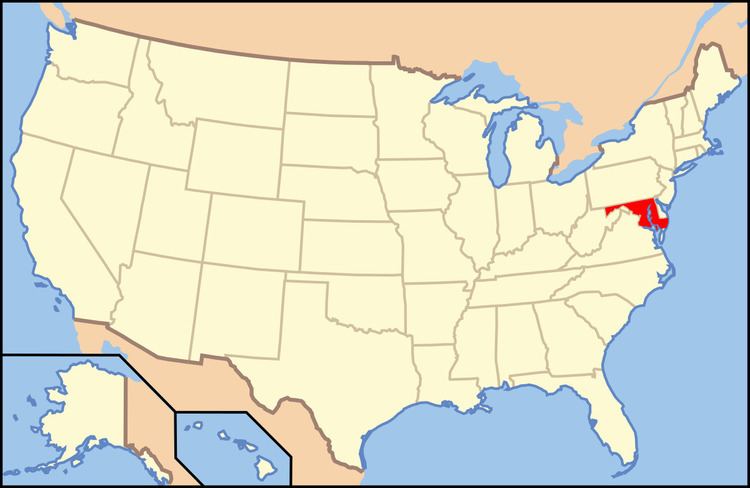Same-sex sexual activity legal? Legal since 1999 Adoption Yes | Restrictions: None | |
 | ||
Gender identity/expression Discrimination legislation and hate crime legislation Discrimination protections Yes, both sexual orientation and gender identity
(see below) Recognition of
relationships Same-sex marriage
performed since 2013 (recognized since 2010) | ||
The expansion of LGBT rights in the U.S. state of Maryland is a recent phenomenon, with most advances in LGBT rights occurring in the 1990s, 2000s, and 2010s. Maryland has statewide protections against discrimination based on an individual's sexual orientation since 2001 and gender identity since 2014. Legislation to legalize same-sex marriage in Maryland was approved by voters on November 6, 2012 and went into effect on January 1, 2013.
Contents
Laws against homosexuality
All laws against private consensual sex were overturned by Maryland state courts. The decision in Schochet v. State (1990) invalidated laws against private consensual sex between heterosexual adults. The decision in Williams v. Glendening (1998) invalidated laws against private consensual oral sex between persons of the same sex. A subsequent settlement in Williams v. Glendening (1999) invalidated laws against private consensual anal sex.
Recognition of same-sex relationships
In 1972, Maryland became the first state to ban civil marriage between persons of the same-sex with the passage of legislation amending the Family Law statute.
Same-sex marriage has been legal since January 1, 2013. In 2012, Governor Martin O'Malley introduced a same-sex marriage bill to the Maryland General Assembly. After much debate, the law permitting same-sex marriage, known as the Civil Marriage Protection Act, was approved by the House of Delegates in a 72–67 vote on February 17, 2012 and approved by the Senate in a 25–22 vote on February 23, 2012. Governor O'Malley signed the law on March 1, 2012. The law took effect on January 1, 2013 after 52.4% of voters approved Maryland Question 6 in a referendum held on November 6, 2012. The vote was hailed as a watershed moment by gay rights activists and marked the first time marriage rights in the United States were extended to same-sex couples by popular vote. Roman Catholic authorities and African-American religious leaders throughout the state had opposed the legislation, saying it would conflict with the best interests of society and threaten religious liberty.
Since 2008, a limited form of domestic partnership has been available to all unmarried couples at least 18 years of age, who can verify their interdependent relationship through documentation. Legal protections for partners include hospital visitation, end-of-life decisions, and joint property rights. Since 2009, Maryland provides employee benefits to the same-sex partners of state employees. The state has recognized valid same-sex marriages performed in other states and jurisdictions since 2010.
In 2015, the Maryland General Assembly passed a law requiring health insurers to offer fertility treatments as a benefit, regardless of a person’s sexual orientation. The Republican Governor Larry Hogan did not sign or veto the bill and the bill became law without a signature.
Adoption
State law permits any adult to petition to adopt and recognizes same-sex couples as co-parents.
Gender identity birth certificates
In 2015, the Maryland General Assembly passed a law to make it easier for people on the basis of gender identity, access and/or change to their birth certificates without any surgery. The Republican Governor Larry Hogan did not sign or veto the bill and the bill became law without a signature.
Discrimination protection
State law protects against discrimination based on sexual orientation since 2001 and gender identity since 2014.
On May 15, 2001, Governor Parris Glendening signed into law the Antidiscrimination Act of 2001 passed by the Maryland General Assembly, which added protection against discrimination based on sexual orientation. Opponents of the law collected enough petition signatures to put it to a referendum in the 2002 elections, but the petition was successfully challenged in court, and the Act took effect on November 21, 2001.
Before the state anti-discrimination statute included gender identity, five jurisdictions—Baltimore City, Baltimore County, Howard County, Hyattsville, and Montgomery County—protected against discrimination based on gender identity. Nineteen of the 20 remaining counties without protections lacked the authority to establish them. Legislation to amend the state anti-discrimination law to include gender identity, the Fairness for All Marylanders Act of 2013, was introduced in January 2013. Although the bill had 23 senators as cosponsors, on March 14, 2013, a Senate committee rejected it on a 6-5 vote. Similar bills had been rejected in previous years. The bill was introduced again in 2014, approved 8-3 by the Senate Judicial Proceedings Committee on February 20 and passed 32-15 by the Senate on March 4. The House of Delegates passed the bill on a 82-57 vote on March 27, 2014. On May 15, 2014, Governor Martin O'Malley signed the bill, the Fairness for All Marylanders Act of 2014, which took effect October 1, 2014.
Legislation in Maryland is subject to popular referendum, and conservative activists mounted an effort to put the law's expanded protections to a statewide referendum by collecting the 55,736 signatures of registered voters needed to place the measure on the ballot. They needed to submit 18,579 signatures to the Secretary of State by May 31 and the remaining 37,157 by June 30. The petitioners failed to submit the required number of signatures by those deadlines, and the law took effect as scheduled on October 1, 2014.
Hate crime protection
State law protects against hate crimes based on both sexual orientation and gender identity.
